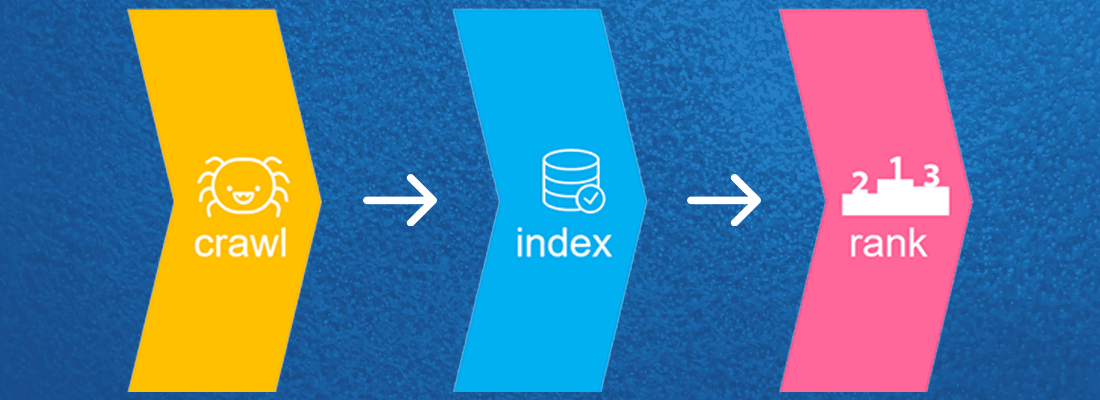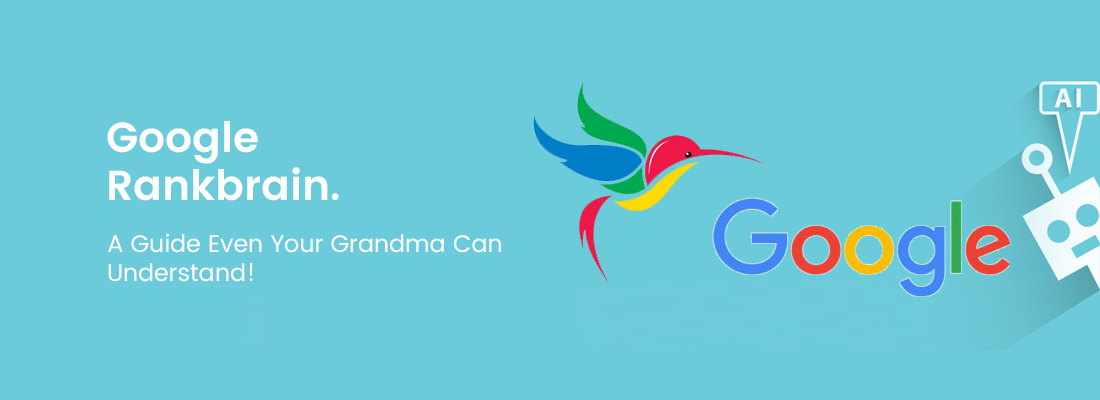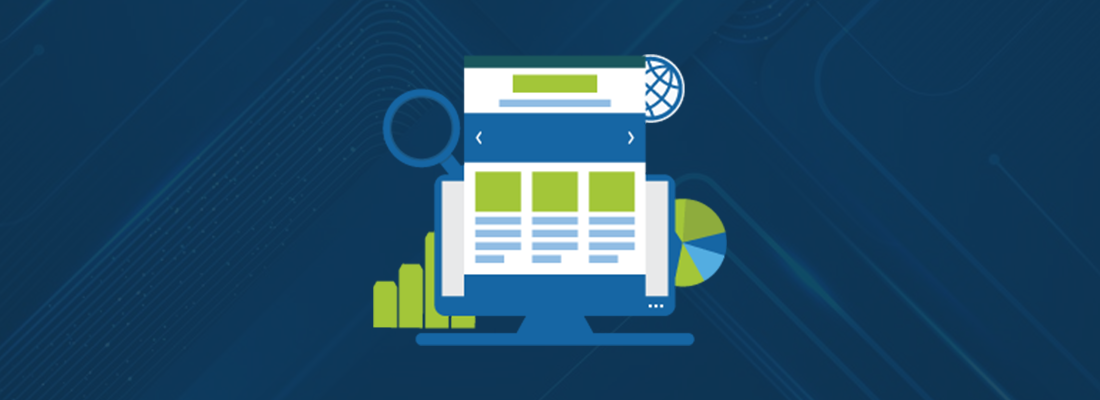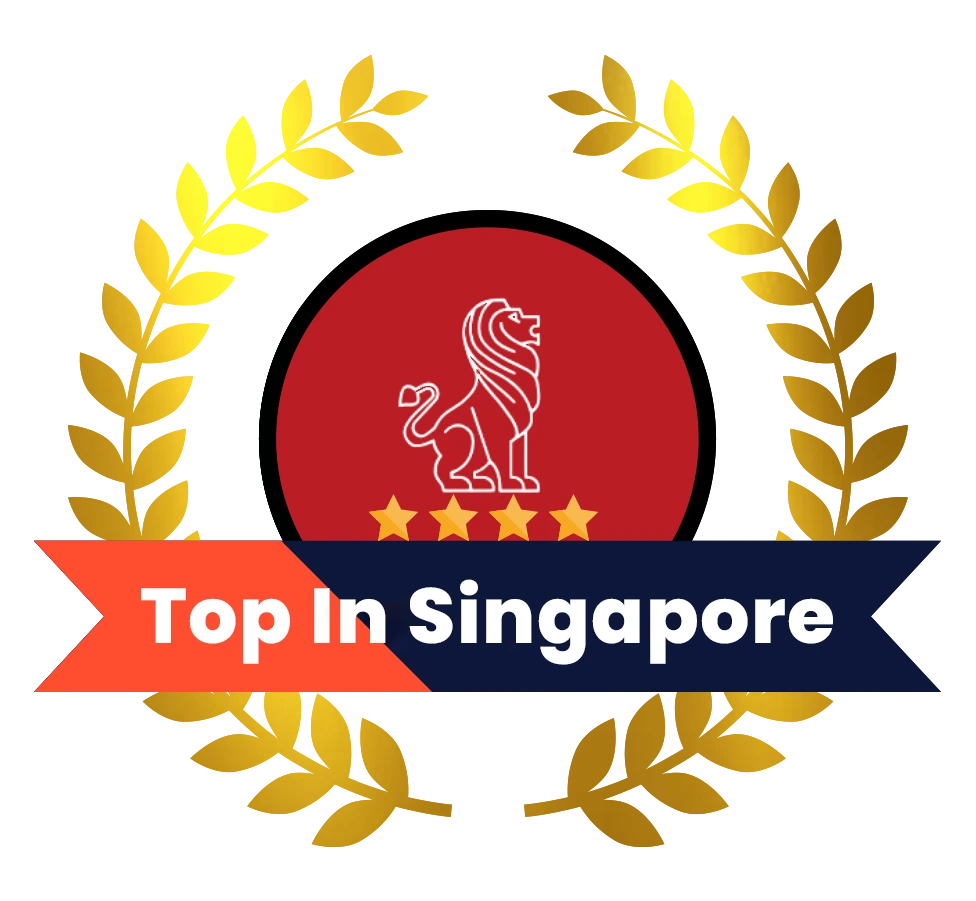
Search Engine Optimisation Explained: Learn The Basics
If you wish to be seen online, then Search Engine Optimization (SEO) is what you need to integrate into your marketing strategy. With the help of SEO, you can optimise your content and get more recognition across search engine results.
The obvious benefit of SEO is free traffic attracted to your site every month. But how exactly can you relevant more cotent? How can you get the ranking you desire? What is the difference between on-page and off-page SEO?
Before answering these questions, let's first understand the fundamentals of SEO.
OVERVIEW
What exactly is SEO?
Search Engine Optimisation (SEO) is a prominent process of attracting free, natural, or organic results across search engines. From Google to Bing, all major search engines show primary search results, which is a collection of local listings, images, and other content ranked according to their relevance.
So let's say you are searching for " SEO Singapore" on Google, the search engine will find the most relevant webpages by matching the keyword with the content on the site. Accordingly, SEO is an excellent approach for improving your traffic quality and quantity in an appropriate manner.
Why is SEO even needed?
As evident from the description of SEO, it is a vital tool for websites to be found online and attract relevant traffic. SEO plays a crucial part in increasing the ranking of a site on search engines like Google, Yahoo, and Bing. With higher rankings, prospective customers can find businesses more easily and interact with them.
It is estimated that almost 94% of buyers look up businesses online before buying anything. As the e-commerce industry is expanding, users are becoming more reliant on mobile services. In fact, by 2021, e-commerce is excepted to take over 17.5% of all retail sales. This means SEO not only brings more traffic, but it also has the potential of increasing your brand's sales.
As more customers are able to find your site, you can establish a sharp brand image online. Higher rankings on result pages also make the brand more trustworthy, as customers consider top-ranking sites to be industry leaders. Furthermore, with SEO, you can expand your business across geographic boundaries.
What is SERP Feature?
SERP features is an umbrella term used to describe various elements used by Google to show search engine results. The SERP you'll be shown depends upon the type of query you have searched.
For instance, if you search for a famous singer, Google will most likely show a knowledge panel with the search results. If you type in " SEO Services Company",you'll mostly get Adwords and Local Packs.
The prominent goal of SERP is to provide variations in search results and help users find relevant results. With SEO strategies, brands can optimise the webpages accordingly and show appropriate information that customers want. Some standard SERP features include:
- Featured Snippet when information from a site is shown in a box
- Knowledge Graph, which provides extra information in panels like weather
- Local Packs that opens map locations regarding the places you have searched
- Sitelinks, which involve other relevant links found in a site
- Adwords for showing paid ads
- Related Questions to support further search
How is Domain Authority different from Page Authority?
Domain Authority and Page Authority are also prominent terms when it comes to SEO strategies. In its essence, Domain Authority refers to a score developed by Moz, which determines the overall ability of a website to rank on the SERPs. On the other hand, Page Authority is a score that does the same but for an individual and not the overall site.
Domain Authority is usually calculatedby evaluating factors, like the number of total links and root domains. For Google, domain authority determines the overall reputation of your site. Similarly, Page Authority is particularly useful in getting more notice from search engines.
Both of these scores range from 0 to 100 (the higher the scores, the more chance is there for a website to be ranked higher). Since these scores are logarithmic, so growing them from let's say 70 to 80 is much difficult than 40 – 50. Also, PA and DA are relative tools, so if other sites improve their scores, yours are deemed to decrease.
GOOGLE WEBMASTER GUIDELINES
In order to ensure websites are getting traffic from ethical practices only, Google has formulated various Webmaster Guidelines that show what provokes the search engine to remove sites entirely from the web. In other words, these guidelines define the actions that make sites more crawlable or indexable.
By following these guidelines, companies can make sure their websites are always available on the SERPs. For example, webmaster guidelines emphasise that a site should be easy to navigate and interact with. Technical analysis should ensure that all the content on the site can be displayed without any programming hindrance.
Substantial importance is placed upon the quality guidelines, which lists various SERP manipulations not allowed. These actions usually include cloaking, auto-generated content, hidden text, and content duplication. By following these guidelines, websites can continue their online operations without any hassle.
WHITE HAT VS. BLACK HAT VS. GRAY HAT SEO
These three terminologies are very common in the SEO industry. While all three approaches are concerned with increasing websites' ranking on Google, each one of them involves different tactics and motives.
White Hat SEO
As the most ethical practice, White Hat SEO usually involves the following of the rules. In this way, such strategies typically improve the site's ranking on SERP without undermining the integrity of your website. Some standard features that can be described under white hat SEO include the creation of quality content, keywords optimisation, and an easy to navigate the site.
Black Hat SEO
Opposite to the white hat SEO, the black hat SEO involves unethical or risky practices of increasing search engine rankings. These practices are known for working only in the short run because they go against the guidelines of search engines. Google Webmaster Guidelines already outline actions that decrease the authority of a site, such as content copying and cloaking.
Gray Hat SEO
There are various perceptions regarding what precisely the gray hat SEO is. Primarily, it is seen as a mixture of both black hat and white hat approaches. In this way, sites using gray hat SEO employ legal methods to enhance the site's ranking, but there are chances that they will eventually become unethical.
What do these definitions mean for you?
It is crucial for brands ot evaluate the distinction between these SEO approaches. This is because regardless of how your site ranks on search engines, it is always more feasible to employ ethical modes of practice. After all, you can't risk getting banned from search engines due to suspicious or unethical marketing tactics.
Accordingly, you should always strive for employing white hat SEO techniques, so you can stay within the guidelines of search engines. These techniques are also more likely to work in the future and generate sustainable results.
HOW SEARCH ENGINES ACTUALLY WORK?

The primary function of search engines is to return relevant results for the users. In doing so, search engines use a constructive process for only showing the most trustworthy and useful information on the SERPs. Search engines mainly work with the help of crawling, indexing, and ranking.
Crawling and Indexing
According to the basic definition, crawling is the process by which google tracks websites across the internet using Google's spider crawlers. As the discovery process, Googlebots fetch a handful of web pages and then follow the links available on them to further land up at new pages.
Once crawling is completed, search engines find and store the relevant information in the index. The results found during crawling are eventually put on the web search. In this way, more and more web pages are added to the Google search, as the crawlers are able to find new content.
Some factors that influence crawling include backlinks, as the crawlers may be able to find them on another site and get linked to yours. On the other hand, duplicate content can cause the crawling to result in an error.
Ranking
Besides ranking, crawling and indexing are also essential approaches for improving the online presence of a customer. Google and other search engines rank the results based on a widevariety of benchmarks. Rankings are particularly helpful to show which websites are more trustworthy and credible.
A website's rank is also known as the position. The search results are usually measured with the help of a highly complex algorithm. The specific ranking factors are all protected, which makes it even harder to determine what is working and what isn't. Some practices that are considered useful for rankings include the usage of keywords, sitemap, URL structure, and the number of backlinks.
Since both customers and google prefer rankings when making any choice, it is always feasible for businesses to channel their efforts in content optimisation, keyword stuffing, backlinks management, and other white hat SEO techniques.
WHAT IS RANKBRAIN?

RankBrain is used by Google as an artificial intelligence system used by Google for sorting out search results. It is part of the overall search algorithm of Google called Hummingbird. Before RankBrain, Google mostly relied on a basic algorithm to get search results.
However, it is believed that search queries now undergo an interpretation model that employs factors like the user's location and the words of the query to determine what the searcher wants.
The extent of RankBrain's on the search algorithm isn't clear yet, but it still impacts SEO strategies. It has become far more critical that sites put up content that provides maximum benefits to the users.
On the other hand, brands need to identify the signals they want to show through the site, such as freshness of the content or in-depth knowledge. RanBrain creates particular environments for brands to progress in which such content can prove to be beneficial.
KEYWORD RESEARCH
It should be evident by now that keywords are essential for sites to rank higher. In SEO, keyword research describes the process of searching and analysing terms that people type in search engines. The goal of keywords is to match people's queries with the right sites. Accordingly, keyword research provides an in-depth insight into what your target audience wants.
In conducting keyword research, it is always feasible to make a list of topics that are relevant to your business. You need to keep yourself in your buyer's shoes and think of what they can search that will lead them to your site. Before choosing the right keyword, you should consider three main factors:
- Relevance: Your keyword should match the searcher's needs, so Google can rank your content higher in terms of significance for the user
- Authority: Google makes sure that your content is not only informative but also trustworthy, which makes it imperative that your site is recognised as an authoritative source
- Volume: It is also essential to determine how many people are searching for a certain keyword, so you only use those words and phrases that are being searched in high amounts
There are various tools that you can use for conducting keyword research by your ownself. In doing so, you should also conduct competitor analysis to see what others are incorporating in their content for attracting customers. Overall, keywords provide a great opportunity for creating a strong online presence.
SEO VS PPC
With marketing becoming so difficult, businesses are unsure whether they need SEO or PPC. Before you can pick one, it is worth understanding differences between them. While both of them are concerned with improving the website's online presence, SEO attracts organic traffic while PPC gets paid traffic.
Since PPC is paid, its ads are placed above and below the organic results. Just like SEO results, where precisely a PPC ad appears depends on factors, like keywords used in the landing page. On the other hand, organic traffic can keep flowing in continuously because SEO can take the site on top-ranking positions. But PPC requires extra monetary investment if you wish to get more clicks.
However, each strategy has its own fair share of benefits, which is why many brands use both PPC and SEO for improving their online marketing. For example, PPC can generate faster results, but SEO services can keep the results coming for a long time. What you use depends upon your marketing intent.
ON-PAGE SEO

As the search landscape is change, businesses are expected to employ a variety of SEO factors for advancing their marketing intentions. In this regard, On-Page SEO is a very prominent practise through which web pages are optimised for enhancing a site's ranking and organic traffic.
Google ranks sites according to their order of authority, importance, and relevance. You can work on these aspects by employing On-Page SEO. It is particularly helpful for delivering results in accordance with the users intent. There are various strategies associated with On-Page SEO. Some of them are described below:
-
E-A-T
Standing for Expertise, Authoritativeness, and Trustworthiness, E-A-T refers to a framework employed by Google raters to evaluate webpages and content found on the web. With this analysis, Google is able to find high-quality content and show it in the search results.
-
Title Tag
As evident from the name, Title Tags are actually HTML elements that identify the title of the webpages. Found on the head sections of the webpages, title tags are used as clickable links that customers can interact with on SERPs.
-
Meta Description
Meta descriptions are found as short descriptions below the title tags on SERP. These descriptions provide relevant information regarding the website or webpages. While they don't affect the rankings of a site, meta descriptions are believed to impact Click-through-rate (CTR).
-
Alt Text
Also called Alt Descriptions, an Alternative text is found within an HTML code, which describes the need for an image on the page. Search crawlers are still unable to interpret images for their intended purposes. Therefore, alt text provides accurate meaning to images they can't see and improve your site's ranking.
-
H1 tag and other headings
Most websites use HTML to build their web pages. HTML uses six heading tags called h1, h2, h3, and so on. These headings are relevant according to their numbers, with h1 being the most important. Since h1 are very notable on webpages, it is considered a crucial SEO feature.
-
Interlinking
Various pages can be found on a particular domain. Internal links basically connect these pages to show Google that they exist. This is particularly useful to distinguish a page from orphan pages, which are not linked or do not exist on the sitemap.
-
Duplicate Content
Content duplication from one site to another is actually considered a bad practice, which lowers the site's ranking. Duplication is not only a matter of copying content. But it can also occur due to improve the use of URL and its parameters.
-
XML Sitemap
XML Sitemap is a handful tool for the search engine to identify the content that exists on a particular website and the ways in which it can be accessed. This SEO feature basically improves the chances of a site to rank better by enhancing its visibility.
-
Mobile Friendly
To provide an excellent user experience and user journey, mobile-friendliness is an essential feature of sites. After all, the majority of the people around the globe have mobiles now, doing searches and visiting websites.
-
Image Optimisation
Search engines also take images into account for evaluating the relevance of a site. Image optimisation usually involves using the right images according to the content or page. Furthermore, the quality of the image, its file size, caption, and Alt text are also outstanding.
-
Page Speed
When websites load slower, there are chances customers will look for another site. Be it imaging, plugins, themes, hosting, or redirects, there are various factors that can lower the speed of a page. Search engines analyse page speeds, and therefore, it impacts the rankings.
-
Schema.org Markup
Schema Markups are used for improving the description richness of a webpage. As microdata, schema markup provides context for a webpage can clear confusion, ensuring customers have a productive experience with the site.
-
HTTP vs HTTPS
The address bar is influenced by HTTPS and HTTPS. Both of them determine the function of an address bar. HTTP, also known as the hypertext transfer protocol, provides information to the users while HTTPS does it in a much secure way. HTTPS basically uses encryption methods for keeping the data safe and secure.
-
Robots.txt
Files with robots.txt are used by site owners for restricting pages or sections that search engines cannot visit. Such a technique can be used for preventing files popping up on the search results, decreasing the chances of content duplication, and reducing server overloading.
-
URL Structure
URL structures are used to help the customers understand what a site or webpage is for. They can be optimised with the help of keywords, canonical tags, and topical authority. It is also suggested to avoid long words and URL strings to further improve them.
OFF-PAGE SEO

Liable for improving search results as well, Off-Page SEO involves strategies that involve efforts outside a website. Accordingly, off-page SEO is concerned with improving the user's reliability on the site, together with its relevance across the search engines.
Importance of Off-Page SEO
You might be looking for an SEO services company and wondering whether you should care about off-page SEO. Undoubtely, Off-Page SEO has relevance just like on-page SEO because search engines focus on a plethora of factors when ranking pages, such as links. External links from other sites act an endorsement for your website, adding more authority to the content.
Types of links for off-page SEO
Links are very critical when it comes to off-page SEO. Now there are three types of links that sites can incorporate. These include:
- Natural Links: These links are earned by the sites naturally, for example, when a new person follows your brand's social media account or links your content to their site
- Built Links: Requiring substantial effort, built links are the result of a site's outreach program. For example, when the brands reach out to influencers for their promotion, they gain developed links
- Created Links: These links emerge from self-submissions across press releases, directories, and forums. However, established links are recognised as a black hat SEO practice
Link Building
Backlinking has excellent importance in off-page SEO because it greatly impacts the site's ranking and traffic it receives. For example, when trustworthy sites link to a particular page, the linked page can appear more credible in the SERPs.
Social media marketing
While social media sites may not impact the rankings directly, they are still crucial for brands to build their online presence. People now look up to social media for making buying decisions. Businesses can also use clever marketing tactics to establish a followers' list.
Google My Business Listings
Tools like Google My Business (GMB) allow business owners to manage their presence in the online world. It provides space for adding your business information on Google, which establishes its public identity.
TECHNICAL SEO
Your SEO service provider will tell you that off-page and on-page tactics are not the only components of a performing SEO package. Your site should be optimized not humans, as well as bots. This is where technical SEO fits in the picture.
It is a process of helping the search engines find, index, and do everything in between when interacting with a site. Technical SEO mostly includes optimisation of robots.text, domain specification, URL structuring, increasing website speed, implementing structured data markup, optimising 404 pages, and conducting pagination.
FINAL REMARKS
Surviving online is becoming tougher with every passing day. But with the right SEO strategy, you can stay ahead of the competition. You can look after these practices yourself if you got time, but the SEO professionals can also do it for you. It all comes down to your business aspirations.

